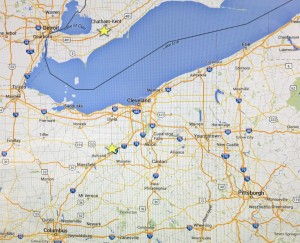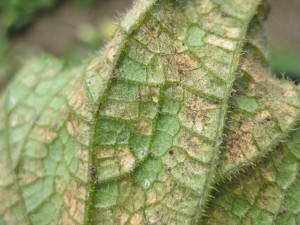Downy mildew was confirmed this afternoon in cucumbers in West Salem (Wayne County), OH. This follows closely the confirmed report of downy mildew in a pickle field in Kent County, Ontario on July 5. With thunderstorms expected in the next few days in northern Ohio, the risk of downy mildew is relatively high, despite high daytime temperatures. Cucumber and melon growers should intensify scouting, and these crops should be protected with effective fungicides. In areas where downy mildew is not present, and where the weather is hot and dry, protectant fungicides such as chlorothalanil (Bravo, Echo, Equus, Initiate) or mancozeb (Dithane, Manzate, Penncozeb) should be applied. These will also help protect plants from anthracnose and gummy stem blight. Now that downy mildew has been spotted in northern Ohio, Zing!, Gavel and/or Zampro can be added to fungicide programs in northern counties as long as downy mildew pressure is relatively low due to low inoculum (sporangia) levels and/or hot, dry weather. When downy mildew risk increases, with wetter weather and greater incidences of downy mildew (= more inoculum), the more effective downy mildew fungicides Ranman and/or Orondis Opti A & B can be added to the program. Remember that Orondis Opti A & B applications are restricted to 1/3 of the total fungicide applications.


